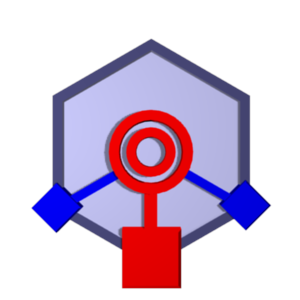Tarnoc and I were talking Star Trek on Saturday and I was saying how hard it is to play a Star Trek RPG. I would also rope any attempt to play a Dr. Who RPG into this but I’ll stick with Trek for now.
It is very hard to play Star Trek and have the same kind of feeling as the TV shows. The structure of the shows tend to go something like this. There is some unusual effect that is slowly growing worse. The crew tries to fix the problem but it doesn’t work. Commercial. The crew regroups, comes up with a different plan but it still doesn’t work. Commercial. The crew uses their combined knowledge of the last two failures to solve the problem. Credits.
So what’s so hard about that? It’s because the problem and the solution are usually technobabble. If I tell you that “Something is causing a reverberation in the dilithium crystals and it’s building up a feedback wave in the warp core.” How do you fix that? Sure you can try to hold off the Klingons while you’re trying to come to a solution, you understand that part. How do you fix a technobabble problem?
The answer starts with not relying on what you know. Rely on what your characters know. This is the perfect time for intelligence rolls, warp drive skills and subspace harmonics specialties. Is that it though? A passed roll and the problem is solved? That doesn’t sound very fun, it also doesn’t follow the structure of the TV shows (assuming that’s what you’re after).
There are a few ways to handle this. I’ll hint at a few and go into my favorite. The simplest would be to have Technobabble waypoints. The PCs have to roll for their skills to come up with a plan, then they have to try it. If there is some kind of a logic behind the technobabble then they might get a clue to the logic when their first plan fails. Repeat. Repeat and solve.
That starts to approximate what happens in the show but it’s not very interesting. Play enough times and the games will probably get a little boring.
Another way to handle the problem is by giving the players more agency. Depending on how they do in their skill rolls the technobabble problem will do different things. If the rolls are bad, the problem could get worse or the symptoms might change entirely. For example, our heroic PCs try to dampen the reverberation in the dilithium and the problem gets worse until system after system in the ship starts shutting off. The problem symptoms may not seem like they have anything to do with each other and that’s part of the fun. Now if the players succeed in their roles the dampening seems to work but the PC that implemented it wakes up that night with their quarters filled with a poisonous gas. Again the problem seems unrelated but something is still going on.
To help the GM it would be good to have a number of story transforms in a list or a table so that they could roll on it and always have a fresh take on where the story will go.
On a failure
Problem gets worse
A second problem is created
Someone gets hurt
Attempt failed any more attempts require putting crew in danger
On Success
Problem fades but comes back growing stronger
Solution does nothing but give a clue to the PC as to real cause.
Problem is partly fixed
I’d have to sit down and watch a bunch of Star Treks to get more ideas for more story transforms. Hopefully you get the idea.
So those are kind of cool but my preferred way to model this is to really amp up player agency and make a technobabble monster! If you’ve looked at the Survival Games posts, apply the logic to this problem. The problem gets it’s own kind of Hit Points that the players have to use their skills to attack. Each technobabble monster is weak to a certain skill, like say Subspace Systems seems to be effective in harming it. Other skills may have some or no effect on it. Attacking it with some skills might even make it stronger.
Now the monster can’t be passive or this isn’t going to be interesting. What kind of attacks can a technobabble monster make? One would be the story transforms. Each time the monster is attacked, the GM throws a transform at the players. These may change the skill that the monster is vulnerable to. They may need physical actions like an obstacle course or a direct attack to be made.
I’m going to try constructing just such a monster that would work for most of these situations. It’s a pretty wide subject but it might be doable. I’ll post it if I can make something that works.
Any ideas for story transforms that you’d like to see?



 The Free RPG Blog
The Free RPG Blog